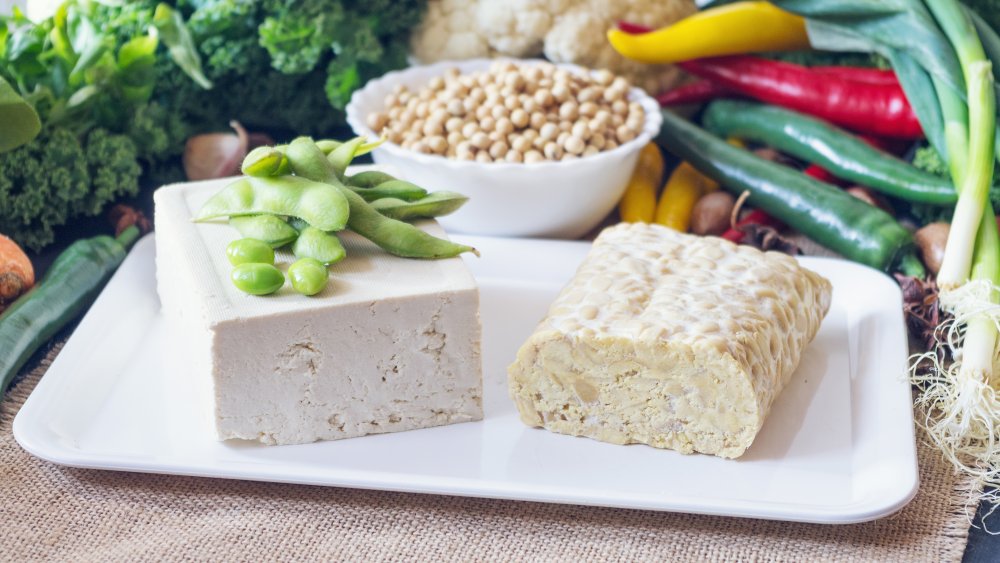This Is The Difference Between Tempeh And Tofu
Tofu and tempeh have a lot in common: They are both adored by vegetarians and vegans as an animal-protein replacement, have been enjoyed for hundreds of years in Asia, and originate from the humble soybean (via Soyinfo Center). In some dishes, they may even be able to work interchangeably. But they have plenty of points of difference, too.
According to Healthline, though both tempeh and tofu are "processed soy products," the more widely-known tofu is a soy milk-based product, while tempeh originates from soybeans that have been fermented (the former made into soft block form, the latter into firm slabs).
Each also offers different varieties. Vegetarian Times notes that consumers can find tofu in silken, soft, firm, extra-firm, super-firm, and even sprouted or baked forms. Meanwhile, aside from its traditional style, tempeh can be infused with additives such as flax or hemp, or with built-in flavorings, like barbecue and curry; it can also be derived from non-soy sources, instead using replacements such as beans and rice (via Your Daily Vegan).
Comparing the flavors and uses of tempeh and tofu
Both tempeh and tofu offer impressive flexibility in the kitchen. Tofu may indeed taste like "absolutely nothing," but its blank-slate flavor also makes it an extremely versatile ingredient for your kitchen (via Philadelphia). Tempeh, though not exactly bursting with flavor itself, has been described as "nutty," but, like tofu, soaks up flavors like a sponge and can take on the taste of whatever it's cooked with, such as sauces or marinades (via America's Test Kitchen).
Tofu is used differently according to its firmness level, with silken types ideal for pureed uses (think soups and sauces), soft types to replace eggs or ricotta, and firm types perfect for using in cube form, or cut into steaks. Tempeh can also be crumbled, cubed, or cut into steaks, but maintains its firmer integrity, so it's especially useful for sturdier applications, like stir-fries and grilling.
Tempeh vs. tofu: Nutritional content
Healthline reports that a three-ounce serving of tempeh contains more calories (140) than tofu (80), but there are benefits of each: Tempeh packs more protein, fiber, iron, and potassium, while tofu counts fewer carbs and more than twice as much calcium. Each provides an equal amount of fat and sodium.
As "minimally processed" soy products, both tempeh and tofu offer many health benefits — potentially reducing cancer risk, offering heart-healthy effects, and even improving fertility — despite past claims that soy could cause damaging effects due to the presence of isoflavones, which are "estrogen-like compounds" (via Good Housekeeping).
Tempeh, however, boasts the added benefit of prebiotics, which promote healthy gut bacteria and have positive impacts on the digestive process.
Ultimately, though tofu is undoubtedly the more popular of the two proteins, these soy-based superpowers boast a wealth of uses in a mind-boggling array of recipes — perfect for your next meatless Monday menu.


